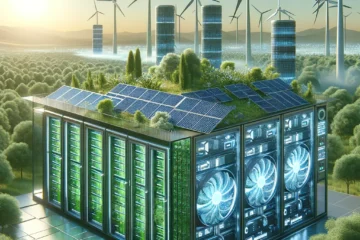In the last century, the image of agriculture has changed radically. Gone are the days of farmers toiling in the fields under the hot sun, aided only by simple hand tools. Instead, they are being replaced by high-tech equipment, digital mapping, and satellite imagery. This isn’t just about easing the physical burden of farming, though. It’s about embracing sustainability to feed our world without destroying it. Herein lies the power of technology in transforming agriculture for a green and sustainable future.
Emerging Tech Trends in Sustainable Agriculture
Smart Farming
One of the most significant technological advancements in agriculture is the rise of smart farming or precision agriculture. This approach uses GPS, data analytics, and Internet of Things (IoT) sensors to monitor crop and soil health, reducing water and fertilizer use and, in turn, lowering the environmental impact of farming. By pinpointing exactly where resources are needed, smart farming eliminates wasteful excess, making it a key player in sustainable agriculture.
Drones and Satellite Imagery
Today, farmers can survey vast areas of land without leaving their homestead, all thanks to drones and satellite imagery. Drones equipped with multispectral sensors provide detailed insights into crop health, detect pests, and determine irrigation needs, all while reducing the need for harmful pesticides. Satellite imagery adds another layer of data, offering a macro view of land use patterns, climate impacts, and more, supporting strategic decision-making for sustainable farming.
Vertical Farming
In densely populated cities where land is scarce, vertical farming offers a tech-savvy solution. By growing crops in vertically stacked layers, often in controlled environments, it’s possible to produce food with minimal land use and significantly less water than conventional farming. This method also reduces the carbon footprint associated with transporting produce from rural farms to urban markets, given that vertical farms can be located directly within cities.
Artificial Intelligence and Machine Learning
Artificial intelligence (AI) and machine learning (ML) are making a significant impact in the field of agriculture, particularly in improving crop yield and reducing waste. AI algorithms can predict weather patterns, assess soil quality, and even identify diseases in crops before they become widespread. These technologies, when paired with IoT devices, can automate irrigation systems and optimize fertilization schedules, further contributing to sustainability.
Lab-grown Food
While this might seem like a page from a science fiction novel, lab-grown food, also known as cultured or cell-based food, is becoming increasingly viable. It requires less land, water, and energy than traditional livestock farming and drastically reduces greenhouse gas emissions. Although still in its infancy, the potential of this technology to revolutionize the way we produce and consume meat can’t be underestimated.
Blockchain for Traceability
In an era where consumers demand transparency, blockchain technology provides a solution. It allows for a decentralized and immutable ledger of transactions, tracing food from farm to fork. Consumers can know exactly where their food comes from, how it was grown, and its environmental impact, encouraging sustainable farming practices.
The Green Future is Here
We’re standing on the brink of a technological revolution in agriculture. These innovations, when fully integrated, promise to transform the farming industry, creating a greener, more sustainable future. But the path to sustainable agriculture isn’t just about technology. It’s about policies that encourage sustainable practices, education that fosters understanding and respect for our environment, and individuals committed to making conscious consumer choices.
As we navigate the future of food, we must remember that each of us has a role to play. From tech developers innovating at the forefront, to farmers adapting these technologies, to consumers demanding sustainably sourced produce, we are all key players in this transformation. By harnessing technology in our pursuit of sustainability, we’re not just shaping the future of food, we’re shaping the future of our planet.
Welcome to the era of green tech in sustainable agriculture, where technology and sustainability intertwine, promising a brighter, healthier, and greener tomorrow. As we cultivate this vision, let us remember the old adage with a new twist: We reap what we tech.




